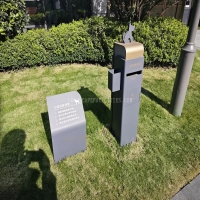Welcome to the website for landscape facilities products and knowledge.
How does the table’s design support ease of use in outdoor meditation gardens?
In the serene corners of outdoor meditation gardens, the humble table serves as an unsung hero of tranquility. Unlike conventional outdoor furniture, meditation tables are meticulously crafted to support both practical needs and spiritual practices. Their design philosophy centers on creating seamless harmony between user and environment.
The most significant design consideration is height and proportion. Meditation tables typically stand between 12 to 18 inches tall—perfect for seated practitioners to reach without straining. This ergonomic calculation allows meditators to maintain their mindful posture while accessing meditation tools. The surface area remains compact yet sufficient to hold essential items like singing bowls, incense, or journals, preventing visual clutter that might disrupt concentration.
Material selection proves crucial for both durability and aesthetic integration. Designers increasingly use weathered teak, smooth river stones, or powder-coated metals that withstand seasonal changes while developing character over time. These materials don't just survive the elements—they evolve with them, mirroring the transformative journey of meditation itself. The tactile experience matters equally; smooth rounded edges invite touch while resisting sharp corners that might snag flowing garments during movement.
Innovative water-resistant storage compartments represent another thoughtful touch. These discreet chambers protect matches, incense, or small cushions from unexpected dew or rain, eliminating the anxiety about leaving items outdoors overnight. Some designs incorporate natural elements directly—tabletops with gentle depressions to hold smooth stones or circular grooves to secure candles against breezes.
The positioning of meditation tables within the garden demonstrates equal intentionality. Designers often place them slightly away from main pathways to create intimate sanctuaries, yet within easy reach of seating areas. This strategic placement respects the meditator's need for slight separation while maintaining accessibility. The tables frequently become focal points that naturally draw practitioners into deeper awareness, their clean lines and organic forms serving as visual anchors during practice.
Perhaps the most profound design element is how these tables incorporate nature rather than compete with it. Some feature open centers for growing moss, others include subtle drainage channels that transform rainwater into aesthetic features. This symbiotic relationship reminds users that their practice exists within nature's rhythm, not separate from it. The perfect meditation table doesn't demand attention—it quietly supports the practice until it becomes invisible, leaving only the meditation itself.
Related search:

Recommendation
Outdoor cat and dog feces trash can; Community pet trash can; Metal multi-color design